BloostonLaw Telecom Update Published by the Law Offices of Blooston, Mordkofsky, Dickens, Duffy & Prendergast, LLP [Selected portions reproduced here with the firm's permission.] www.bloostonlaw.com | Vol. 11, No. 20 | May 21, 2008 |
700 MHz “D Block” FNPRM Seems To Be Only The First Step Toward Re-Auction But Rural Carriers May Wish To Consider Advocating Smaller Licensing Areas In the text of its Second Further Notice of Proposed Rulemaking (FNPRM), the FCC revisits its decisions concerning the 700 MHz Public/Private Partnership – considering revisions to this partnership as well as alternative rules it should adopt in the event the D Block licensee is no longer required to enter into a mandatory public/private partnership. But this appears to be only a first step toward a re-auction of the D Block spectrum; the Commission states that there will be another FNPRM detailing more specific proposals. This raises the question as to whether the D Block will be reauctioned before the end of this year, and whether the final rules will be determined by this Administration. We note, however, that the FCC will now consider alternative approaches to the D Block licensing scheme, and therefore encourage our small and rural clients to join in comments urging that the D Block be licensed (at least in rural areas) via smaller license areas that would allow small business/rural telco participation in the re-auction; and that any public safety participation requirements for rural areas take into account the difficulties of a rural build out. These carriers could be the most logical entities to achieve coverage to more remote communities. In the FNPRM, the FCC considers clarifications and revisions to the public safety component of the 700 MHz Public/Private Partnership that would better promote its public interest goals. More specifically, it seeks comment on whether, under Section 337 of the Communications Act and Section 90.523 of the Commission’s rules, only entities that are providing public safety services are eligible to use the public safety spectrum portion of the shared network established under the 700 MHz Public/Private Partnership, and whether such entities should be required to subscribe to the network. The FCC also seeks comment on whether to clarify the requirement that the Public Safety Broadband Licensee be a nonprofit organization and specify that entities associated with the public safety component of the 700 MHz Public/Private Partnership, apart from outside advisors or counsel with no debt or equity relationship to the Public Safety Broadband Licensee, may not be for-profit entities. In addition, the FCC seeks comment on possible modifications to the various rules governing the D Block licensee and the Public Safety Broadband Licensee within the framework of the 700 MHz Public/Private Partnership (as revised or clarified). First, it seeks comment on whether it remains in the public interest to require a public/private partnership between the nationwide D Block licensee and the Public Safety Broadband Licensee for the purpose of creating a nationwide, interoperable broadband network for both commercial and public safety network services. Next, to ensure a thorough consideration of the Commission’s options in the event that it continues to require a public/private partnership between these licensees, the FCC seeks comment on a broad set of possible revisions to the 700 MHz Public/Private Partnership, including revisions regarding the respective obligations of the D-Block licensee and the Public Safety Broadband Licensee. In particular, the FCC seeks comment on the following issues: (1) the technical requirements of the shared wireless broadband network to be constructed by the D Block licensee, (2) the rules governing public safety priority access to the D Block spectrum during emergencies; (3) the D Block performance requirements and license term; (4) the respective roles and responsibilities of the D Block licensee and Public Safety Broadband Licensee in connection with the 700 MHz Public/Private Partnership and the shared wireless broadband network, including whether the Public Safety Broadband Licensee may assume responsibilities akin to a “mobile virtual network operator”; (5) the various fees associated with the shared network; (6) the process for negotiating and establishing the Network Sharing Agreement, including the consequences of a failure to reach agreement; (7) certain auction-related issues, including whether to restrict who may participate in the new auction of the D Block license, how to determine any reserve price for such an auction, whether to adopt an exception to the impermissible material relationship rule for the determination of designated entity eligibility with respect to arrangements for the lease or resale (including wholesale) of the spectrum capacity of the D Block license, and whether the Commission should modify the auction default payment rules with respect to the D Block winning bidder; and (8) relocation of the public safety narrowband operations. Finally, the FCC seeks comment on other revisions or clarifications that may be appropriate with regard to the 700 MHz Public/Private Partnership, including whether to license the D Block and public safety broadband spectrum on a nationwide or adopt a regional geographic service area basis such as Regional Economic Area Grouping (REAG). Licensing without the Public/Private Partnership: The FCC would also consider options if the D Block is licensed without the 700 MHz Public/Private Partnership condition. It notes that there are several circumstances where such options might be relevant. First, the FCC might determine that it should immediately conduct an auction to license the D Block without such a Public/Private Partnership condition. In addition, it might conclude that, even if it should retain the 700 MHz Public/Private Partnership condition in the next D Block auction, the condition should be removed if the next D Block auction fails to produce a winning bidder, or the winning bidder defaults or fails to negotiate a successful Network Sharing Agreement with the Public Safety Broadband Licensee. Therefore, for any circumstances where the FCC determines that the 700 MHz Public/Private Partnership condition on the D Block should not be retained, it seeks comment on revisions to the rules that would be appropriate with respect to the D Block license as well as revisions with regard to the Public Safety Broadband License that would ensure the development and deployment of a nationwide interoperable broadband network for public safety users. Finally, the FCC notes that, in the event that that it determine not to proceed with the 700 MHz Public/Private Partnership, it seeks comment broadly on how it may still achieve the public interest goal of ensuring a nationwide, interoperable broadband network is available for the use of public safety, and whether there are further revisions or obligations the FCC should impose on the Public Safety Broadband License to achieve these goals. In this regard, the FCC seeks comment on the appropriate geographic service area for the D Block in the event that the D Block license is re-auctioned without a 700 MHz Public/Private Partnership obligation. Would it best serve the public interest to continue to license the D Block on a nationwide basis, or should the FCC choose a smaller geographic service area, such as the CMA, EA, and REAG sizes used to license the other 700 MHz blocks? The FCC notes that, in evaluating the appropriate balance of license areas, it will continue to consider the 700 MHz Band as a whole, including the commercial spectrum that has been previously auctioned. The FCC requests that commenters provide information that would corroborate the benefits of their proposed geographic area and the costs and benefits of adopting an alternative license area. Commenters should also discuss how a particular license area for the D Block would best serve the public interest, considering the commercial 700 MHz Band spectrum as a whole. Finally, commenters should address whether the availability of package bidding, which may mitigate the exposure risk for bidders seeking certain aggregations of licenses, should influence the FCC’s choice of geographic license service area for the D Block. The FCC said it is launching its Second Further Notice with the following principles and goals: - To identify concerns in the existing structure of the 700 MHz Public/Private Partnership to inform its decision making going forward;
- To promote wireless innovation and broadband network penetration while meeting the communications needs of the first responder community in a commercially viable manner;
- To facilitate public safety access to a nationwide, interoperable broadband network in a timely manner;
- To identify funding opportunities for the public safety community to realize the promise of a broadband communications infrastructure with a nationwide level of interoperability; and
- To maximize the commercial and public safety benefits of this unique piece of 700 MHz spectrum.
The FCC invites comment broadly on these principles and goals, as well as the specific subjects discussed herein. Before ultimately adopting final rules in response to this Second FNPRM, the FCC said, it plans to present for public comment, in a subsequent Further Notice, a detailed proposal regarding the specific proposed rules. Comments in this WT Docket No. 06-150 proceeding are due June 20, and replies are due July 7. BloostonLaw contacts: Hal Mordkofsky, John Prendergast, Cary Mitchell, and Bob Jackson. REPLY DEADLINE IN USF REFORM PROCEEDING EXTENDED UNTIL JUNE 2: The FCC has extended until June 2 the deadline for reply comments on the three Universal Service Fund (USF) Reform Notices of Proposed Rulemaking (NPRMs) in WC Docket No. 05-337. These include the Joint Board NPRM, the Identical Support Rule NPRM, and the Reverse Auctions NPRM. An extension had been requested by the Independent Telephone and Telecommunications Alliance (ITTA), National Exchange Carrier Association (NECA), National Telecommunications Cooperative Association (NTCA), Organization for the Promotion and Advancement of Small Telecommunications Companies (OPASTCO), United States Telecom Association (USTelecom), and Western Telecommunications Alliance (WTA). The motion for extension was supported by the National Association of State Utility Consumer Advocates (NASUCA) and the National Association of Regulatory Utility Commissioners (NARUC). BloostonLaw contacts: Ben Dickens, Gerry Duffy, and Mary Sisak. SENATE PASSES RESOLUTION DISAPPROVING FCC’s MEDIA OWNERSHIP RULE: The U.S. Senate last week passed a joint resolution, S.J. Res. 28, disapproving the FCC’s broadcast media ownership rule. The resolution, which does not carry the force of law, states: “Resolved by the Senate and House of Representatives of the United States of America in Congress assembled, That Congress disapproves the rule submitted by the Federal Communications Commission relating to broadcast media ownership (Report and Order FCC 07-216), received by Congress on February 22, 2008, and such rule shall have no force or effect.” The resolution was introduced by Sen. Byron Dorgan (D-N.D.). In supporting the resolution, Senate Commerce Committee Chairman Daniel Inouye said: “Like many of my colleagues, I am deeply troubled by the FCC’s rulemaking that would allow greater consolidation of our media.” FCC Commissioner Michael Copps released a brief statement: "The Senate spoke for a huge majority of Americans last night by voting to overturn the flawed FCC decision gutting our long-standing ban on newspaper-broadcast crossownership. With courageous leaders like Senator Byron Dorgan, the Senate has struck a blow for localism and diversity in a media environment crying out for more of both." Commissioner Jonathan Adelstein said: “This vote reflects a strong consensus across the ideological spectrum against further media concentration, from left to right and virtually everybody in between. The FCC veered dangerously off-course from the American mainstream, so our elected representatives are trying to steer us back.” Although the resolution will have no effect on the FCC rule, it does send a strong signal that Congress is not happy with it. BloostonLaw contacts: Hal Mordkofsky, Ben Dickens, Gerry Duffy, and John Prendergast. FCC SETS COMMENT DATES FOR NOI ON FRAUDULENT 911 CALLS MADE FROM WIRELESS NSI PHONES: The FCC has established comment dates for a Petition for a Notice of Inquiry (NOI) filed by the public safety community regarding the number of fraudulent 911 calls made from wireless non-service initialized (NSI) phones. Comments in this PS Docket No. 08-51 proceeding are due June 30, and replies are due July 29. The petitioners state that these calls often are taking valuable resources and time away from individuals and families who truly are in need of emergency assistance when they dial 911. NSI phones are cell phones without service contracts that have no associated name and address, and do not provide Automatic Number Identification (ANI) and call back features used by Public Safety Answering Points (PSAPs) to respond to 911 calls. According to petitioners, in 2006, PSAPs in Tennessee reported more than 10,000 fraudulent 911 calls from NSI phones in just a three-month span of time. In Florida, several PSAPs reported approximately 8,400 fraudulent 911 calls from NSI phones in just one month (December 2006), constituting more than 96 percent of the 911 calls received by those PSAPs from NSI phones. Currently the Commission’s rules require wireless carriers to transmit all wireless 911 calls, including those made from NSI phones, to 911 call centers or PSAPs. In 2002, because of the limitations of these cell phones, the FCC clarified that its rules do not prevent wireless carriers from blocking fraudulent 911 calls from NSI phones. Actions taken by carriers to block such calls must be done in adherence with applicable state and local law enforcement procedures. However, according to the petitioners, blocking such calls has raised technical and legal concerns by wireless carriers and the public safety community. The FCC notice calls for public comments, analysis and information on the nature and the extent of the problem for PSAPs across the nation in responding to fraudulent calls; carriers’ legal and technical concerns with blocking 911 calls from wireless NSI phones and potential ways to make this a more viable option; as well as other possible solutions to address this issue. The petition was filed by the Tennessee Emergency Communications Board, the National Association of State 9-1-1 Administrators, the Michigan State 9-1-1 Office, the New Jersey State 9-1-1 Commission, the Snohomish County Enhanced 9-1-1 Office, the National Emergency Number Association, the Association of Public-Safety Communications Officials International, the State of Montana 911 Program, the Washington Sate E911 Program, and Openwave Systems, Inc. (BloostonLaw Telecom Update, April 16). BloostonLaw contacts: Hal Mordkofsky, John Prendergast, and Richard Rubino. FCC RESCHEDULES AUCTION 78 FOR AUGUST 13: The FCC has rescheduled Auction No. 78 for licenses in multiple radio services to commence on August 13, 2008. This auction will include 55 unsold licenses: 35 licenses in the Advanced Wireless Services (AWS) 1710-1755 MHz and 2110-2155 MHz bands (AWS-1) and 20 licenses in the broadband Personal Communications Service (PCS). The spectrum to be auctioned has been offered previously in other auctions but was unsold or returned to the Commission as a result of license cancellation or termination. Interested clients should contact BloostonLaw for the specific licenses available. The Commission released a Public Notice outlining the filing requirements, minimum opening bids, upfront payments, and other auction rules and procedures. We note that there will be no reserve prices for the 35 AWS-1 licenses, and broadband PCS licensees will no longer be responsible for costs associated with relocating Fixed Microwave Service (FMS) operations. The pre-auction deadlines are as follows: Auction seminar—June 10; shortform application filing window opens—June 10; shortform application filing deadline—June 19; upfront payment deadline—July 17; mock auction—August 11; and auction begins August 13. BloostonLaw contacts: Hal Mordkofsky, John Prendergast, Cary Mitchell, and Bob Jackson. RCA ASKS FCC TO INVESTIGATE EXCLUSIVE HANDSET ARRANGEMENTS: The Rural Cellular Association (RCA) has asked the FCC to investigate exclusive handset arrangements between carriers and handset manufacturers, according to Wireless Week. In its petition, RCA said it requests that “the commission initiate a rulemaking to investigate the widespread use and anticompetitive effects of exclusivity arrangements between commercial wireless carriers and handset manufacturers and, as necessary, adopt rules that prohibit such arrangements when contrary to the public interest, consistent with its obligations under the Communications Act.” Citing the example of Apple’s agreement with AT&T for the iPhone, RCA’s petition explains that the exclusive arrangement between the two means that most Vermont residents, as well as residents in rural areas of 15 other states, cannot use the popular handset as AT&T only offers roaming service in the state and local carriers cannot sell the iPhone. The petition also cites exclusive handset deals between LG and Verizon Wireless, and Samsung and Sprint Nextel, saying exclusive handset arrangements create “another “digital divide” between urban and rural America.” RCA’s complaint comes at a time when carriers are facing increasing pressure to open their networks and allow consumers more choice about what devices and applications they wish to use over networks, Wireless Week said. BloostonLaw contacts: Hal Mordkofsky, John Prendergast, and Cary Mitchell. MAY 31: FCC FORM 395, EMPLOYMENT REPORT. Common carriers, including wireless carriers, with 16 or more full-time employees must file their annual Common Carrier Employment Reports (FCC Form 395) by May 31. This report tracks carrier compliance with rules requiring recruitment of minority employees. Further, the FCC requires all common carriers to report any employment discrimination complaints they received during the past year. That information is also due on May 31. (The Form 395 is newly revised this year—prior versions are obsolete.) The FCC encourages carriers to complete the discrimination report requirement by filling out Section IV of Form 395, rather than submitting a separate report. Clients who would like assistance in filing Form 395 should contact Richard Rubino and Bob Jackson. |













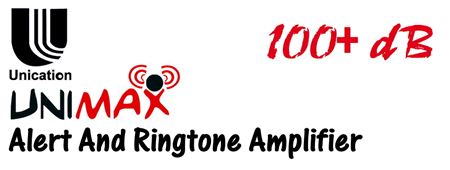

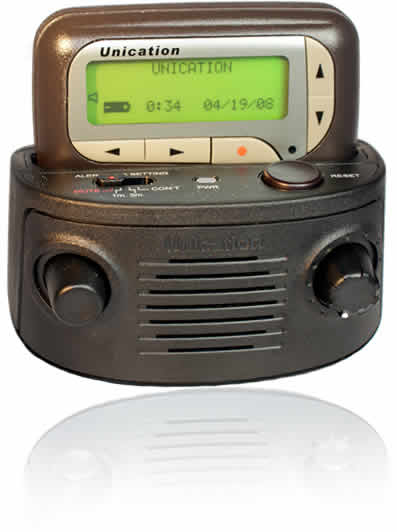

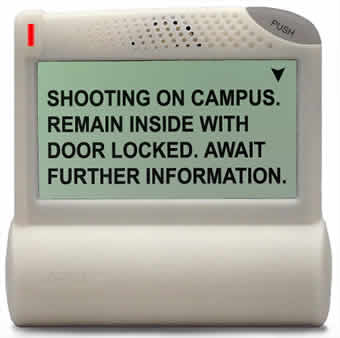

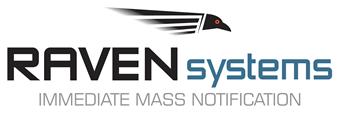


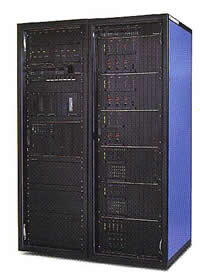
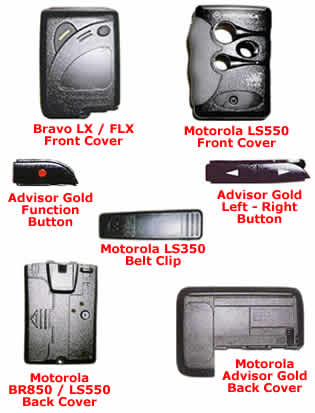

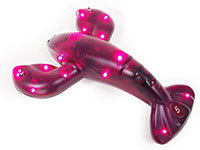 Last week in At Play we had a short debate on the pros and cons of the ubiquitous vibrating flashing restaurant pager. Here were exhibits A, B and C. I demanded to know who was in charge. OK, I asked rather meekly if I could talk to the owner of the company, which is called
Last week in At Play we had a short debate on the pros and cons of the ubiquitous vibrating flashing restaurant pager. Here were exhibits A, B and C. I demanded to know who was in charge. OK, I asked rather meekly if I could talk to the owner of the company, which is called  Well, first things first, Ken. He actually owns the patent on a crab pager. So expect it in the near future. He also owns the patent on a pager shaped like a sombrero, and a horseshoe-shaped pager, and a tire-shaped pager, and a cactus pager, and a fish pager, and a—well, that’s it. But, wow, incredible, right?
Well, first things first, Ken. He actually owns the patent on a crab pager. So expect it in the near future. He also owns the patent on a pager shaped like a sombrero, and a horseshoe-shaped pager, and a tire-shaped pager, and a cactus pager, and a fish pager, and a—well, that’s it. But, wow, incredible, right?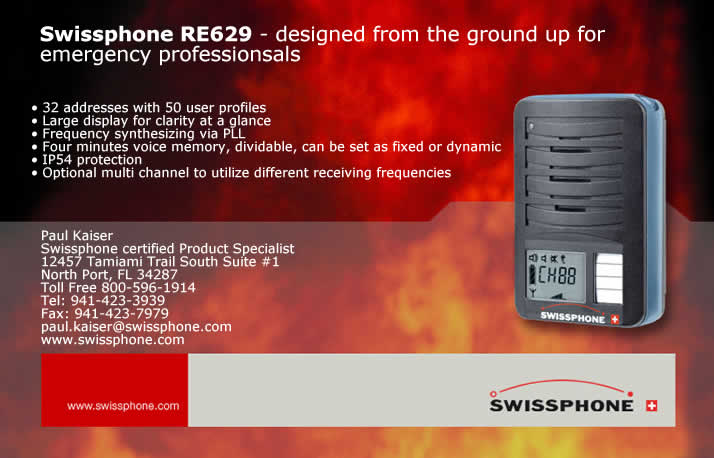
 Sprint confirmed this afternoon that the Samsung Instinct, Sprint's answer to the Apple iPhone, will start showing up on store shelves on June 20.
Sprint confirmed this afternoon that the Samsung Instinct, Sprint's answer to the Apple iPhone, will start showing up on store shelves on June 20.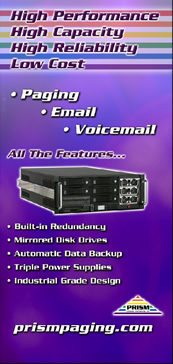





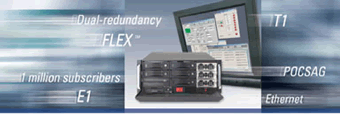



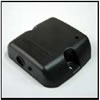

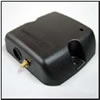
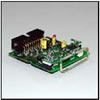


 SACRAMENTO – In a state frequently plagued with wildfires, floods and earthquakes, the ability of emergency services to reach limited English speakers could be the difference between life and death.
SACRAMENTO – In a state frequently plagued with wildfires, floods and earthquakes, the ability of emergency services to reach limited English speakers could be the difference between life and death. 
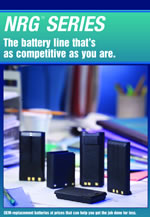


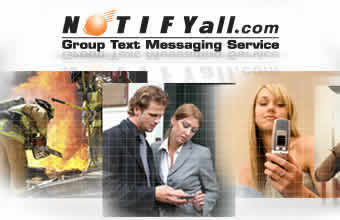
 In November 2007, ARRL President Joel Harrison, W5ZN, wrote to the American Red Cross (
In November 2007, ARRL President Joel Harrison, W5ZN, wrote to the American Red Cross (
















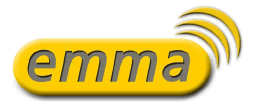
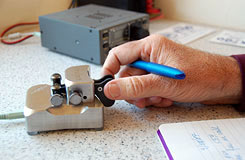
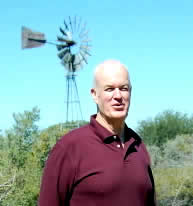
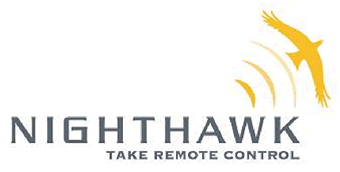






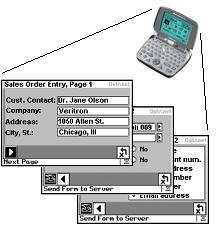 If you see someone in the field (like salespeople, technicians, and delivery people) using paper forms, their company could probably save a pile of money, and get much better timeliness, accuracy and efficiency, by using converting to Outr.Net's Wireless Forms. Custom applications for as little as $995, delivered in just a few days.Outr.Net has a web page on Wireless Forms for Timeports at:
If you see someone in the field (like salespeople, technicians, and delivery people) using paper forms, their company could probably save a pile of money, and get much better timeliness, accuracy and efficiency, by using converting to Outr.Net's Wireless Forms. Custom applications for as little as $995, delivered in just a few days.Outr.Net has a web page on Wireless Forms for Timeports at: 



